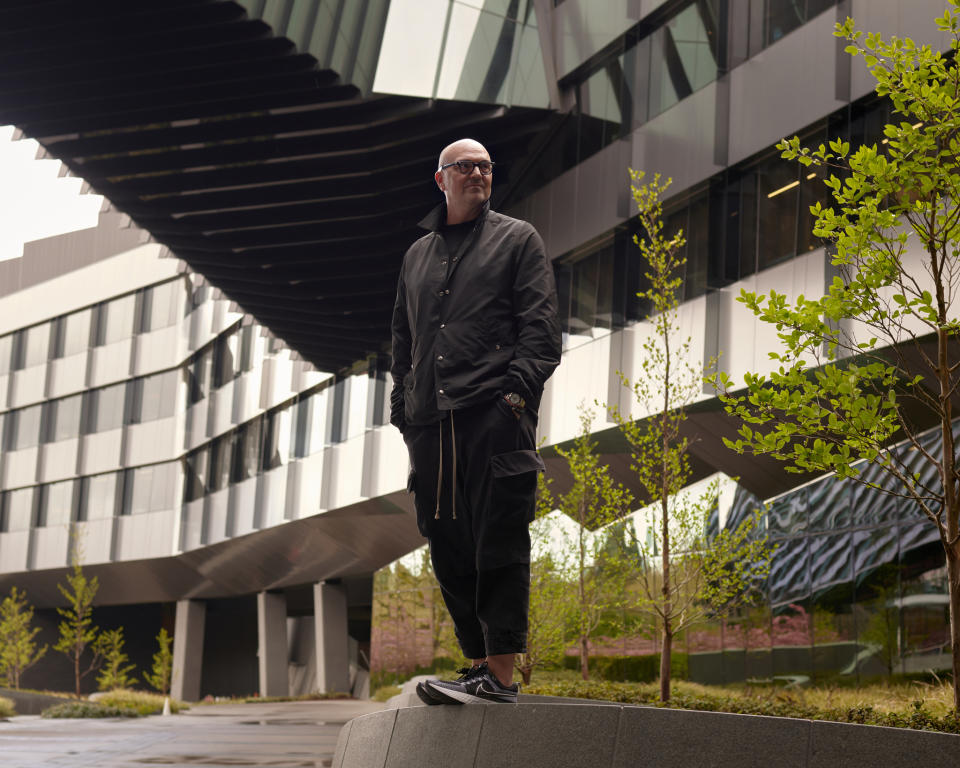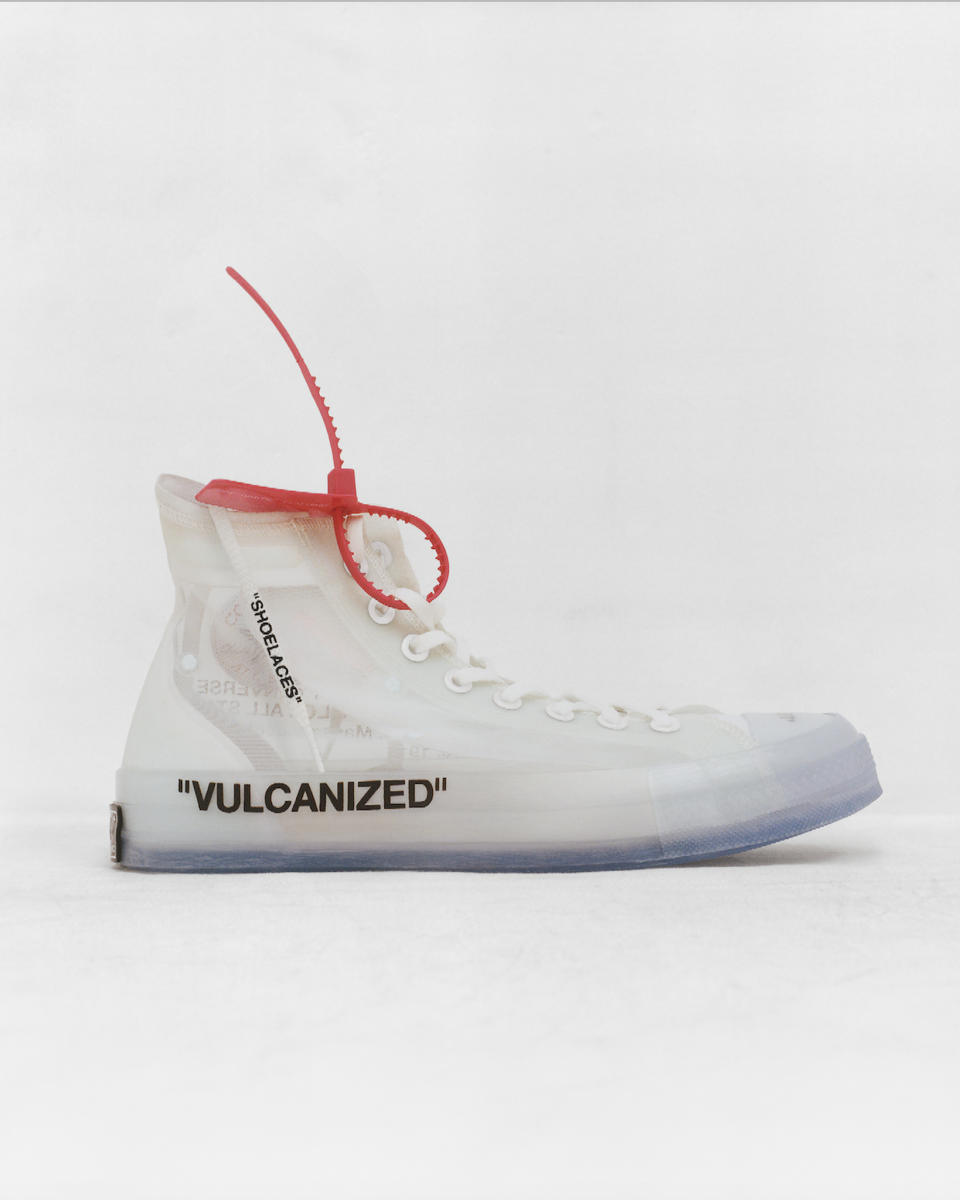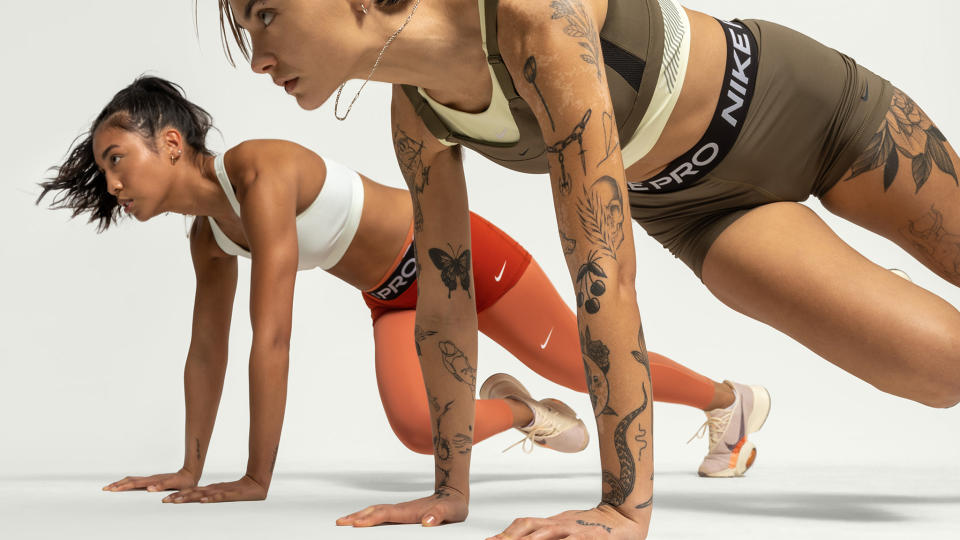John Hoke: The Architect Behind Nike’s Product Innovations

John Hoke is dyslexic and he’s not ashamed to admit it. In fact, it’s his dyslexia that has helped him see the world in a different way and climb to the top of the design ranks at Nike Inc., where he’s worked for three decades.
As chief design officer, Hoke leads a team that numbers more than 1,000 across the globe, overseeing both footwear and apparel, and his goal is to constantly push the envelope by exploring new technologies, materials and silhouettes.
More from WWD
His love of design emerged at a young age and continues today.
“I’m dyslexic,” he said, “so my first language was drawing. I drew everything obsessively. That’s the way I navigated the world, it’s the way I perceived the way things work, the way things were made.”
Growing up, he was a good athlete and enjoyed playing everything from stickball to running track. “I was always moving and always drawing,” he said. “Back in the ’70s, I was a rabbit for the older boys on the cross-country team and would watch them all in their racing flats and their training shoes, and they were always Nike — waffle trainers. So, I would draw these sneakers at home with the Nike Swoosh. That’s how I spent my summers.”
And much like Nike cofounder Bill Bowerman — who famously sliced up and reimagined existing running shoes in his quest to make the runners on his University of Oregon track team better and created the famous waffle shoe on his wife’s waffle iron — Hoke also always had a similar thirst for questioning the norm.
“One afternoon in the summer I was floating on a raft in a pool. And I thought, what if I shrank this down to a mattress and put it under my foot? Would that help the shock absorption and my spring off?” he recalled.
He grabbed his sketchpad and created a blueprint of this cushioning idea, and his father, who was an engineer, was impressed enough to encourage him to send it off to Nike’s Phil Knight.
Surprisingly, Knight wrote him back — “The letter is hanging in my office,” Hoke said — and said he thought it was an intriguing idea and when Hoke got older, he should think about joining Nike.

Meron Menghistab/WWD
Although Hoke got a degree in architecture and worked with Michael Graves after college, it was probably a foregone conclusion that he would eventually join Nike.
When he interviewed with former chief executive officer Mark Parker, he brought the letter from Knight, saying, “I’m here to redeem the coupon he sent me in the ’70s,” he said with a laugh. “And I’ve been here since 1992.”
Hoke believes that design is his destiny and over the years he’s drawn on his experience in architecture and his love of sport “to help reimagine the physical expression of our brand.”
Initially, he worked primarily on image and brand design at trade shows and global exhibits as well as on the Niketown stores and he created the first web site as well as physical and digital catalogs.
He then spent eight years in the footwear department as vice president of design, two years at Converse, and got an MBA in business from Stanford University to also learn “the language of business.”
While keeping up with ever-changing technologies and design updates necessary to remain on top of the competitive sports world may seem overwhelming to some, to Hoke it’s simply “exhilarating,” he said.
“I think one of the most important lessons that we learn from the world of athletics and sports is that the best is temporary. When athletes achieve victories, break through barriers, create new world records, you get to stop and celebrate for about 15 seconds, because you know it’s going to change. And so I think there’s a fundamental transference of that same appeal into our business, and specifically into design. The best is always in front of us and we need to chase what’s possible. How far can we push, how much can we support our athletes? That’s the fundamental north star in the company.”
Hoke said it’s essential that he and the design team remain “hyper-curious. We have to be listening to our athletes, our consumers, we have to be fully paying attention and at the same time, live with a sense of wonder that the future is unwritten but never unimagined.”
While there have been numerous wins at Nike over the years, there have also been some products that have pushed the boundaries too far, notably the Alphafly Next% prototype shoe the brand created for Eliud Kipchoge to break the two-hour mark in the marathon. That controversial shoe was nearly banned from international competition.
Hoke said: “We’re always innovating. We’re always seeking the chance to give all athletes around the world an invitation to find their best. And at times, some of those innovations can be deemed too far. With the shoe that you’re referencing, we just built a better mousetrap. We use the same ingredients that every other company uses, we just use them better. We combined that geometry, the chemistry, the way it’s fit, the way it works, to give a slight advantage. We’ll always be building better mousetraps and because of that, I think we’ll always be a part of progressing sports.”
But moving sports forward doesn’t just mean new product innovations. It also involves updating more-classic pieces to meet modern demands.
“Classics are something to be reimagined to a new generation,” Hoke believes. “We’re 50 years old and there are certainly classics that this company has made. And the reason they’re classic is because of the perfection of form and function and materiality and desirability.”
It takes finesse to update these products without losing their authenticity. “It’s a lot of caretaking,” he said. “As we have to curate for every generation, the things that we think matter are a direct reflection of what the consumers want from us. So it’s always eyes on the ground. It’s always a thoughtful curation. In many instances, these classic products are diaries of sorts, a canvas for self-expression for every generation. There’s a deep emotional resonance with them.”
But by working with buzzy contemporary designers such as the late Virgil Abloh, who updated some of the best-known models from Nike, Jordan Brand and Converse, or reinventing shoes to better address the needs of women or society’s quest for sustainability, the company is able to appeal to a wide range of consumers — and stay relevant to the next generation.

Courtesy of Nike
As far as collaborations go, Hoke said Nike seeks individuals in “the realm of art, fashion, media, etc., that want to find new ground together. But the most important thing from my perspective is that we meet as equals and find something that neither one of us could find alone. Virgil is a phenomenal example. We were able to find new frontier as a company with his perspective and our perspective.”
But Hoke said that the “number-one collaborator” for Nike continues to be its athletes. “I get to work with the world’s best athletes — and they are ambitious. They want to achieve things athletically that progress sports. And again, we meet as equals, we’re on the same team. We’re challenged with the same goals. How do we break down barriers to sports? How do we together use both innovation and imagination as two powerful bookends to find form, vocabulary, functionality, cultural relevance? That just keeps progressing the company and sports.”
Hoke is also charged with ensuring that the Nike assortment appeals to the non-elite athlete.
For its entire life, Nike has operated under the belief set down by Bowerman that says: “If you have a body, you’re an athlete,” Hoke said. “So regardless of your status — elite to novice — we believe every athlete deserves a chance to find that potential. There are universal things such as comfort and drape that may have started with the Olympics, but have cascaded into something the everyday person can appreciate.”
Hoke believes that the opportunity to innovate and continue to move forward is “limitless” for both footwear and apparel design. “There are 7.5 billion people on this planet, and we want to invite every person to find the power of sports. We have major potential in our women’s offense and just restructured the company to focus on the women’s business from head to toe. How do we design for her? What is the science we need? What is the styling we need? What are the fabrications and expressions for the spectrum of women?”
Although Lululemon and other brands have made strides servicing women, Hoke said Nike is “not fixated on our competition, we’re fixated on our potential. That isn’t to say that we don’t pay attention to our competition, because that’s always been an accelerant at this company. We are a company that is born in Oregon, raised on sport and obsessed with innovation. And because of that, we’re competitive. But we fixate on what our consumers need and want from us.”

Courtesy of Nike
If the company falls short, he continued, “we do a critical self-assessment, stop, reappraise what’s needed and realign. And I think in the women’s business, we’ve got a lot of amazing new science that’s combined with a holistic approach, a head-to-toe approach of fit for every body, fabrications, and materials that feel great, drape really well, flatter the form and give her confidence. So I’m very bullish that we have the right strategy to continue to grow the women’s opportunity.”
Another key growth area revolves around sustainability, which Hoke said is now “table stakes” for socially conscious businesses. “We view climate change as one of the most important problems we’ll probably ever face as a species,” he said.
So the company is working to reduce its carbon use and cut down on the waste it creates, issues he views as “an accelerant” rather than a “constraint.” He pointed to the Space Hippie, a shoe created from scrap material from the factory floors, to the ISPA Link, a shoe made without glue that can be easily disassembled, as two prime examples.
“There’s the old adage that form follows function, which is essentially utility and beauty combined,” he said. “But that’s not enough. Circularity is a huge goal for us. We’ll be testing a few things next month and in the upcoming years where we’re going to go out and learn and see what we can do in the circularity space.”
Looking ahead, Hoke believes that “design is at an important time in history because of the acceleration of technology. And the role of the designer is becoming more of a creator. It’s imagine, make, print, study, test, learn. Previously, there was a latency but now it’s a beautiful marriage of technology and physicality. We’re not making images, we’re making things with incredible speed that become a platform of creativity.”
Sign up for WWD's Newsletter. For the latest news, follow us on Twitter, Facebook, and Instagram.

